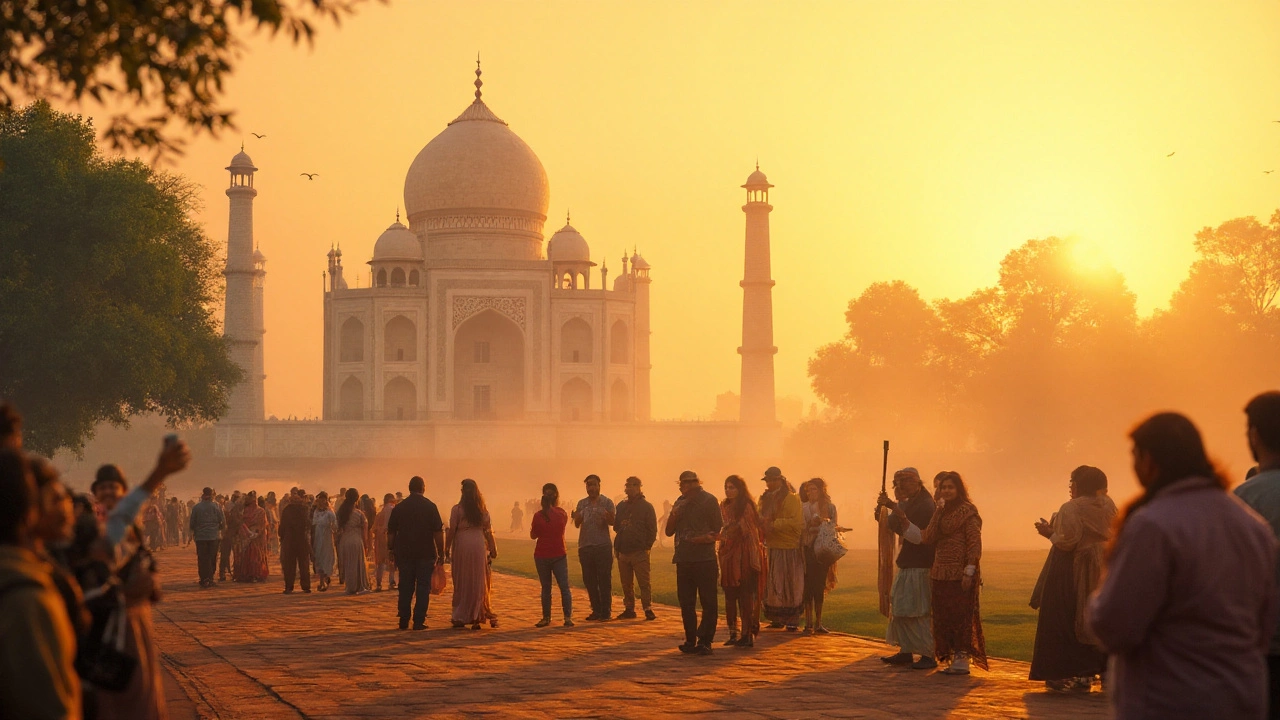Popular Historical Sites in India: Top Heritage Destinations to Visit
When you think of popular historical sites, ancient monuments and cultural landmarks that draw millions of visitors each year. Also known as heritage destinations, these places are more than just old buildings—they’re living stories carved in stone, paint, and tradition. India holds 42 of them, recognized by UNESCO, and each one tells a different part of a 5,000-year-old story. From the towering forts of Rajasthan to the silent temples of Tamil Nadu, these sites aren’t just for photos—they’re where history breathes.
Many of these places are tied to ancient temples India, sacred structures built with precision, devotion, and artistry over centuries. The Mundeshwari Temple in Bihar, dated back 5,000 years, is one of the oldest known Hindu shrines still standing. Then there’s the intricate carvings of Khajuraho, the massive stone temples of Hampi, and the golden spires of Madurai’s Meenakshi Temple. These aren’t just religious spots—they’re architectural marvels that show how deeply faith and art were woven together in ancient India.
Then come the UNESCO World Heritage India, officially protected sites that represent global cultural or natural significance. The Taj Mahal isn’t just a pretty building—it’s a symbol of love, engineering, and Mughal power. The Ajanta and Ellora caves reveal Buddhist, Hindu, and Jain traditions carved into cliffs. Even the historic city of Jaipur, with its pink walls and grid layout, is listed for its urban planning that’s still in use today. These places aren’t frozen in time—they’re still part of daily life, with locals praying, markets buzzing, and tourists walking the same paths as kings and traders centuries ago.
What makes these sites stand out isn’t just their age, but how they connect to real travel experiences. You don’t just see the Red Fort—you walk through its gates, hear the echoes of Mughal court music, and taste chai sold by vendors who’ve been there for generations. You don’t just visit the Sanchi Stupa—you learn why it survived wars and colonial rule because communities protected it. These are places where history isn’t behind glass. It’s under your feet, in the air, and in the stories locals still tell.
Some of the most powerful moments come when you realize these sites are part of bigger traditions. The Kumbh Mela, the world’s largest religious gathering, happens at the banks of the Ganges near historical cities like Prayagraj. Temple festivals like Rath Yatra turn ancient structures into living stages of music, dance, and devotion. Even today, these places aren’t just tourist stops—they’re active centers of culture, faith, and community.
Whether you’re drawn to grand palaces, silent ruins, or sacred shrines, India’s popular historical sites offer something no museum can: the feeling of walking through time. Below, you’ll find real guides from travelers who’ve been there—what to expect, how to avoid crowds, where to find the best local food nearby, and which spots most visitors miss. These aren’t generic lists. They’re honest, practical insights from people who’ve stood where you’re about to stand.
Most Visited Historical Site in the World: Stats, Facts & Travel Tips
Curious about the world's top historical site? Find the answer, dive into real stats, quirky details, and savvy tips to make your own visit unforgettable.
Read more